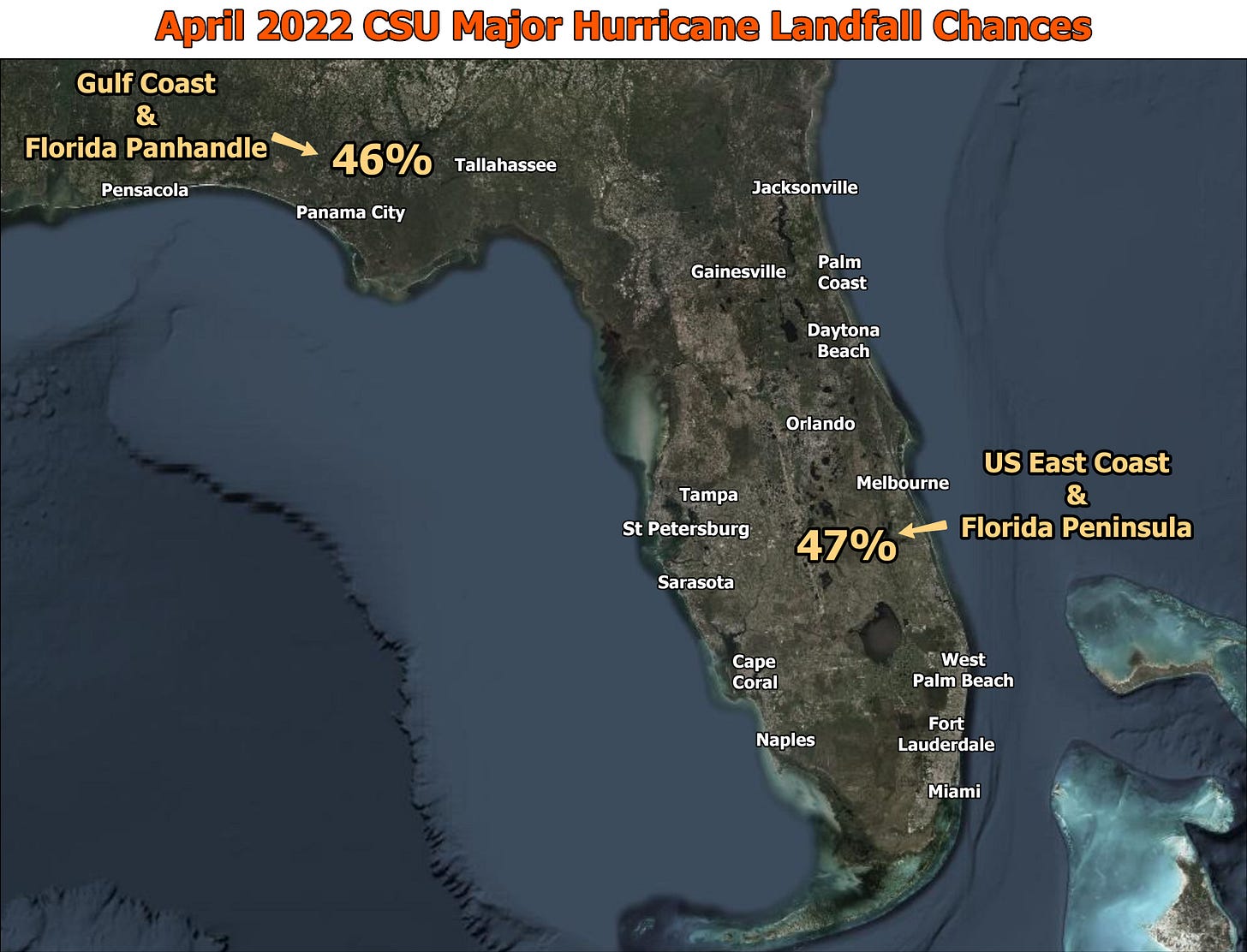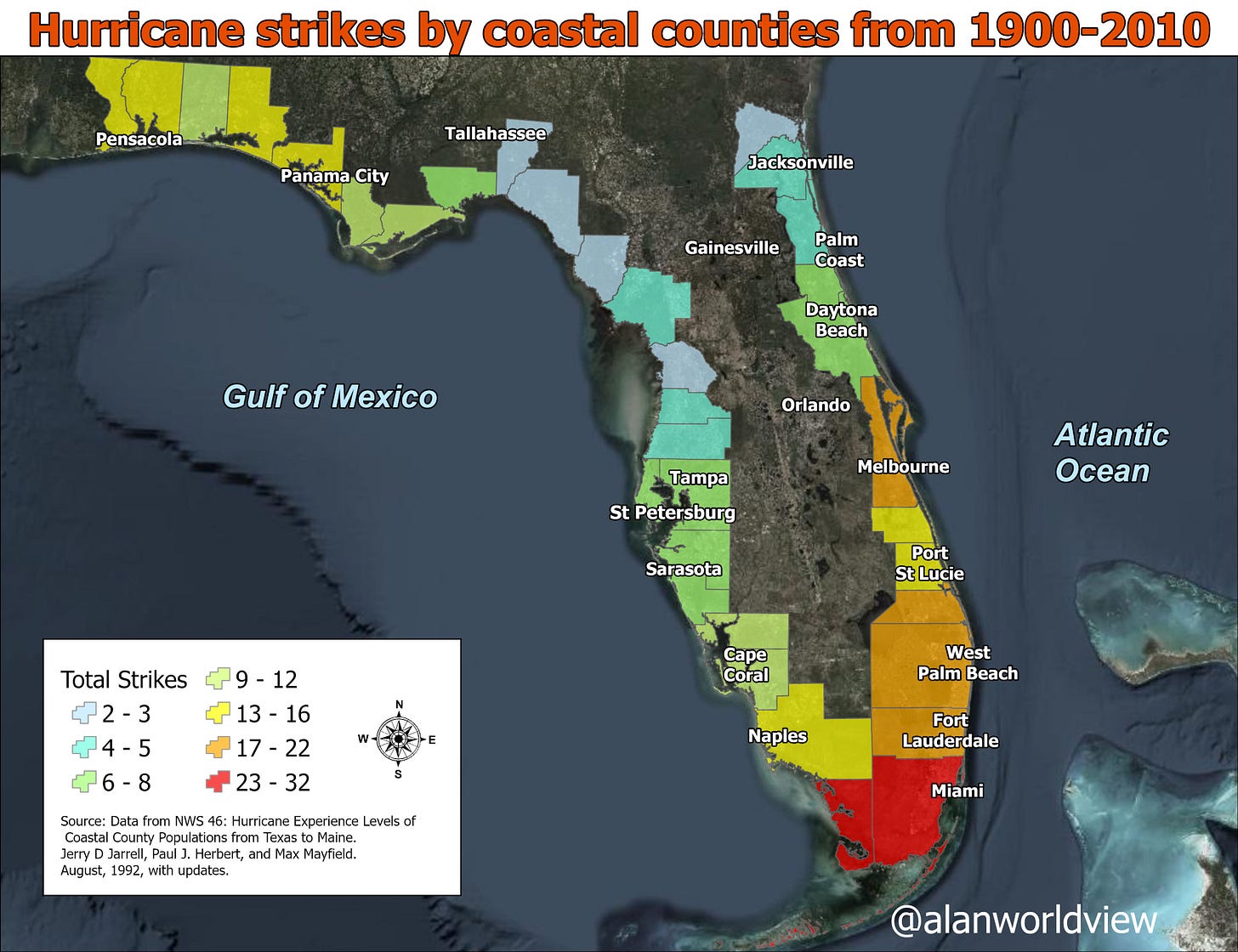If you live in Florida, now is the time to prepare for the 2022 Hurricane Season
Learn where Florida’s real risks lie and how to prepare early—before forecasts spike, store shelves empty, or storms strike.
The 2022 Hurricane Season is approaching fast, so if you are a Floridian or thinking of moving to Florida now is the time to get prepared
The Colorado State University (CSU) has just released the April 2022 Extended Range Forecast for the Hurricane Strikes. In a typical season, the chance of a landfall by a major hurricane (Category 3-4-5) for the US East Coast including Peninsula Florida averages a 31% and the Gulf Coast from the Florida Panhandle to Brownsville Texas averages 30%.
As of the April 2022 Extended Range Forecast, the US East Coast including Peninsula Florida is currently forecasted for 47% and the Gulf Coast from Florida Panhandle to Brownsville Texas is forecasted for 46%.
While the extend range forecast provides us a general idea about what to expect for the year, we must also take into consideration where hurricanes have a history in making their landfall. The 1900 to 2010 hurricane strikes by coastal counties reminds us that risk is not distributed evenly. South Florida with Miami has historically been the hotspot. The Florida Panhandle is another risky part of Florida. Finally, the North-Eastern part Florida from Jacksonville to Tallahassee is generally the less risky part of Florida.
Regardless of the risk, it only takes one hurricane making landfall to make it an active season for your community which is why it is critical to prepare in advance.
FEMA has a must read guide on how to prepare for a Hurricane?
As we continue the year with supply chain disruption, it is important to prepare now as you and your family still have enough time to make preparations. When the media begins to cover a potential hurricane strike for Florida, you may not have enough time to get all your preparation ready as everyone will be emptying store shelves.
In addition, this guide covers what do during the hurricane and dealing with the aftermath. There a lot myths about hurricane and FEMA guide also goes over some of them. For instance, did you know that as little as 12 inches of water can float a small car and 18 of water can float a full-size SUV?
Finally, if you live on the coast and are trying to determine if you are in an evacuation zone, the live map from Florida storms is very good start.
Be safe out there.
Disclaimer: The views expressed in this article are solely my own and do not reflect those of any public agency, employer, or affiliated organization. This blog aims to educate and empower readers through objective geographic and planning insights, fostering informed discussion on global and regional issues


